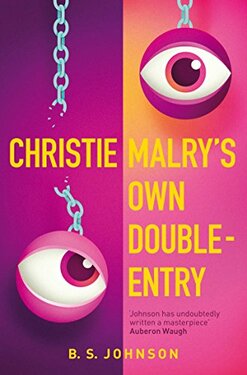With good writers it can take some time for us to become their contemporaries.” writes John Lanchester in his introduction to Christie Malry’s Own Double Entry (1973). This is certainly true, with Johnson’s work dubbed ‘experimental’ at the time (taken as a synonym for unsuccessful) and more palatable now in a field flush with postmodernism.
This, his last before committing suicide aged forty, is an anti-novel, tearing up the rulebook of the 19th century novel and making its own laws. It knows it’s a novel; reminds the reader of this; references itself; and even the characters know they’re in a novel. And yet, for all its shredding of convention, it’s a conventional story too.
Christie is seventeen and ‘a simple person’ who, on realising he wasn’t born into money, goes where the money is, first working in a bank and, feeling no closer to cash there, decides on accountancy, becoming an invoice clerk. In his studies he learns of the ‘sublime symmetry’ of Double Entry bookkeeping, the accounting practice where credits are balanced with debits.
Double Entry leads to Malry’s ‘Great Idea’ in which he forms a moral version. Thus when he feels aggrieved by a perceived injustice, he makes equal note in his balance sheet on how to settle the account. The grievances start small with commensurate responses, but as Malry is given over to greater anger the small issues (debits) are valued high, the credits low, and a growing balance (or ‘reckoning’) is carried over month on month.
The conceit of using Double Entry in life is a fun idea and the whole book fizzes with ideas to disrupt (in a comedic way) the expectations of a normal novel. Johnson gleefully dispenses with characters when no longer needed and acknowledges implausibility. References to other pages send us back to earlier passages and through Johnson’s sesquipedalian choices we reach for the dictionary to decipher words like ungraith, helminthoid, and exeleutherostomise.
For all its content, this is a short work (around 20,000 words) and comes with actual balance sheets with accounts drawn up. It’s definitely worth a read. Subversive, comedic, and I could go on were it not for Instagram’s word count limits (where this was originally posted).
